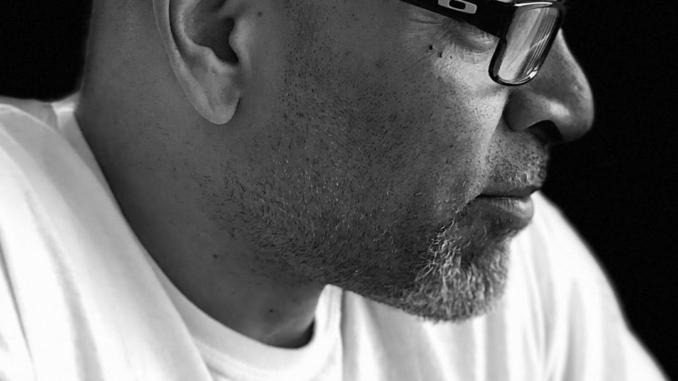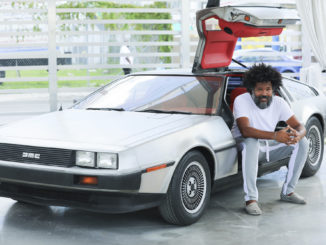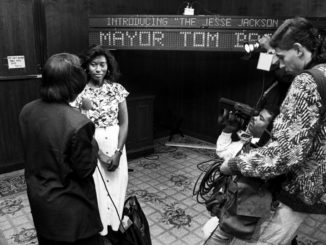
By Elijah Pittman
America is enduring a turbulent political climate, with legislation and U.S. Supreme Court rulings radically stripping back progress. The SCOTUS has repealed abortion protections and affirmative action, while several states have banned books and diversity, equity, and inclusion initiatives.
Historically, the response to political turbulence has taken place in young adult spaces, specifically college campuses.
Nearly fifty years ago, in a similarly politically turbulent time, America went through several political movements, the rise of the Black Panthers, the anti-war movement, and the 1969 Morehouse College protest, all inspired or started on college campuses.
“The revolution has always been in the hands of the young,” Huey P. Newton, the founder of the Black Panther Party, told The Movement in a 1968 interview while sitting in a jail cell.
As many of the legislative and SCOTUS actions uniquely affect Black people, it is worth looking at HBCUs as an institution and student population to gauge how the Black community may grapple with these changes.
“HBCUs are not here to produce that [a politically active Black generation]. They’re here to produce a black bourgeoisie or middle class, a compliant and sort of acceptable version of blackness that is decidedly not revolutionary,” said Dr. Jared Ball, professor of Africana Studies and Communications at Morgan State University.
Dr. Ball argues that after the Black Power movement, collegiate institutions explicitly sought out science, technology, engineering, and math-related (STEM) programs with the idea that said fields are less likely to produce radical activists.
Another major reason HBCUs sought out STEM programs is the state and federal governments’ historic underfunding of HBCUs. In 1958, during the Cold War, President Dwight D. Eisenhower signed the National Defense Education Act, which allowed universities to secure funding by increasing their STEM programs.
“I came to a realization that we were being groomed to be something that I didn’t necessarily want to be. The Morehouse College administration was rooted in some old-school things…You would be a great doctor, a great lawyer, maybe a great scientist. I didn’t want to be just another negro in the advancement of America card,” Samuel L. Jackson said in a 2018 interview with the Hollywood Reporter.
Jackson’s sentiments echo those of students today as well. On social media platforms, students from all schools have pointed out the contrasts between their business or engineering schools and their fine arts or liberal arts schools.
“One of my friend’s goals was to create a Tuskegee fine arts club because they wanted students to come out and express themselves, but we don’t have a Tuskegee fine arts…or liberal arts,” said Scotteria Scott, a rising junior at Tuskegee University.
Scott is an animal science major and the community service chair at Tuskegee University. She said that her school needs to do more to support her NAACP chapter and that it wasn’t until her third year that the chapter was informed about conference opportunities for networking.
When asked about how her university reacted to abortion laws and the banning of books in Alabama, Ayalana Fry, a student at Alabama State University said that her university doesn’t deal with controversy well.
“Alabama State is all about administration and just making themselves look good,” Fry said.
Despite HBCUs falling short of some students’ desires, there are incremental ways to make space for new political spaces and ideologies at HBCUs. Faculty themselves can center more radical and revolutionary content in their syllabi and curricula, according to Dr. Ball.
“When it comes to protesting or having more radical beliefs I think specifically the administration has done things to kind of swipe that history under the rug,” said Trinity Webster-Bass, a junior studying Broadcast journalism and Afro-American studies at Howard University.
“Any institution can produce its opposite, it’s just not designed to do it,” Dr. Ball said when asked about what students could do to revolutionize their peers. “Students at any HBCU can use that time and have that time impact them in a positive way.”
Scott plans to stay on the e-board of the NAACP at her school to secure a president position so she can be more involved with operations and the prominence of the NAACP at her school.
“I feel like we just have to do more with advertising, we do stuff at the school but is anyone capturing those moments? Is anyone showing students that you can do this [community service] but we’re actually going to help you, you don’t have to do it on your own,” Scott said.
The current president of the NAACP at Tuskegee University highlighted the events that their chapter has hosted recently.
“We were given the opportunity to volunteer for several hours and we had a booth set up on the yard to make sure that parents and students could get registered to vote,” said Seanna Brooks, a rising senior and president of Tuskegee University’s NAACP.




Be the first to comment